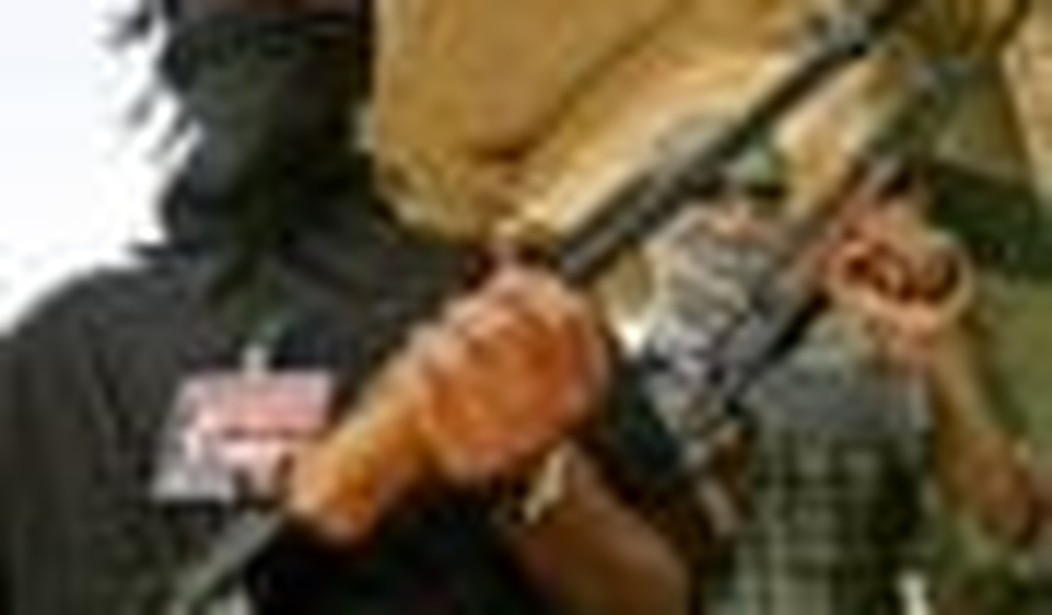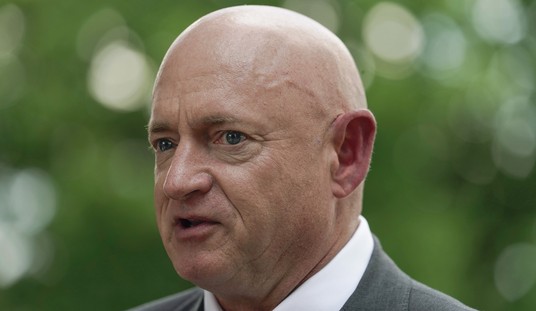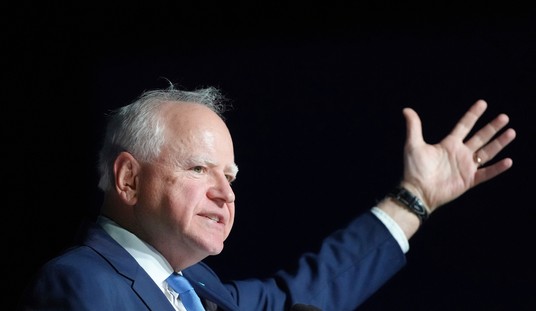Following a speech in late November 2001, a member of the audience caught me in the hallway and asked me, “What really powers an organization like al-Qaeda?”
“Grievance and money,” I replied.
I didn’t have time to elaborate on my entering-the-elevator quip, but the speech had addressed several of Osama bin Laden’s more grandiose historical gripes. (This column from November 2001 is illustrative.)
Obviously, aggrieved and embittering passions do not ipso facto create a terrorist. Money doesn’t commit murder and sociopaths with slender resources can wreak terrible mayhem. However, cash creates options, and killers with cash become a much deadlier force and more complicated enemy. Flush finances mean mass murderers can recruit, sustain, and train more terrorist cadres; conduct increasingly sophisticated reconnaissance missions; create and support a communications network; run propaganda and psychological operations; and acquire more weapons — in other words, they can operate and maintain a complex organization.
The March 11, 2004, Madrid terror bombing sparked a particularly memorable discussion in the undergraduate seminar I teach at the University of Texas. The Madrid atrocity arguably led to al-Qaeda’s biggest victory. Al-Qaeda targeted Spain as “the weak link” in America’s “coalition of the willing” alliance and conducted the attack seventy-two hours before the national election, with the clear intention of scaring the Spanish electorate and electing a “peace” government. Al-Qaeda achieved both goals. The Madrid bombing provided an unfortunate opportunity to discuss bin Laden’s irredentist claim to Spain — he bewails 1492 — and compare it to Leonid Brezhnev’s Cold War declaration “once Communist-socialist, always Communist-socialist.”
During the class, one of my students asked a serious question, albeit with a definitely undergraduate twist: “Dr. Bay, how do you run a terrorist organization?” Well, I don’t run a terrorist organization, though appeasnik Democrats often react rather strongly to my newspaper columns. The student, however, wanted an “elements and process” explanation — in other words, an operational, dynamic description. Grievance and money were part of my answer.
Writing the Global War on Terror chapter for the 4th edition of A Quick and Dirty Guide to War gave me the opportunity to expand on my classroom response to the student’s broader question: What does it take to create and run an international terrorist movement?
1. Grievance
A well-run terrorist organization must be able to leverage grievance and resentment. Historical resentments provide a particularly fertile ground for radical ideology that promises justice — to salve the grievance and resentment — and quick social solutions.
What Went Wrong? by scholar Bernard Lewis, published right after 9/11, provides an excellent summary of Muslim and Arab “historical grievance.” From a grand political, economic, and cultural zenith in the 11th and 12th centuries, the Islamic world has declined. Osama bin Laden bewails those 800 years of decline and degradation.
Someone has to take the blame. Islamist terrorists insist that Islam is under attack by infidels, meaning non-Muslims. This assault comes in the form of ideas, including democracy, that are, or should be, abhorrent to a true believer in Islam. The United States is considered the principal enemy because America produces most of the video, audio, lifestyle, and intellectual “attacks” that the Islamic radicals find so distasteful. At first, Islamic terrorists sought to overthrow the “corrupt” governments in existing Islamic nations such as Egypt and create Islamic republics. All of these “true” Islamic nations would then unite to reconstitute the caliphate that existed over a thousand years ago, the last and only time all Islamic countries were united. That unity didn’t last because people and countries are different, and Islam was not enough to keep them all united. That has not changed.
2. Ethnic or Sectarian Antagonisms
Terrorists almost always exploit ethnic and sectarian antagonisms. Ireland’s IRA and Spain’s ETA are European examples.
Al-Qaeda thrives on both ethnic and sectarian divisions. Muslims had been driving infidels out of Islamic nations for a long time. That’s why most Arab-Americans are Arab Christians. Despite having been in Arab lands before Islam came along, Arab Christians — and Arabs professing other religions — were always under pressure to either convert or leave. Many of those who left over the past two centuries came to America and prospered in a much more tolerant society. Islamic militants have conducted campaigns against infidels in Kashmir (1989-present), Indonesia (1998-present), Egypt (1985-present), Philippines (2000-present), Nigeria (1999-present), Lebanon (1975-90), Sudan (1988-present), Pakistan (1989-present), and Israel (2000-present). These campaigns against non-Muslims go beyond the lower level of religious strife that has taken place for centuries. The current violence is part of the Islamic radicalism espoused by groups like al-Qaeda. The objective is the expulsion of infidels from Islamic areas, as defined by Islamic radicals, and the eventual conversion of all infidels to Islam. This religion-based terrorism has killed over half a million infidels, mostly Christians, in the past two decades.
3. A Recruitment Base
Terrorist organizations need recruits — the more angry, resentful, and aggrieved, the better. Al-Qaeda believes it has a large recruitment pool. There are approximately one billion Muslims on the planet, and most of them live in impoverished and oppressed countries run by corrupt, autocratic governments. Islam is the majority religion in 52 nations (Afghanistan, Albania, Algeria, Armenia, Azerbaijan, Bahrain, Bangladesh, Bosnia, Brunei, Burkina Faso, Chad, Cote D’Ivoire, Djibouti, Egypt, Eritrea, Ethiopia, Gambia, Ghana, Guinea, Indonesia, Iran, Iraq, Jordan, Kazakhstan, Kuwait, Kyrgyzstan, Lebanon, Libya, Malaysia, Maldives, Mali, Mauritania, Morocco, Niger, Nigeria, Oman, Pakistan, Qatar, Saudi Arabia, Senegal, Sierra Leone, Somalia, Sudan, Syria, Tajikistan, Tunisia, Turkey, Turkmenistan, UAE, Uzbekistan, Western Sahara, and Yemen). Several other nations have large Muslim minorities (Mozambique, Suriname, Guinea Bissau, Liberia, and India). Europe’s “new underclass” of unassimilated immigrant Muslims and unemployed Muslim men provides another recruitment pool.
4. Crime
Terrorists have an easier time operating when there are powerful criminal gangs available to provide weapons, information, and transportation services. Nations that have a great deal of terrorism, or function as a base for terrorists, usually have high crime rates.
Drug smugglers are generally apolitical, but they also offer a criminal underground that will provide weapons and other assistance to anyone who can pay for it. During the Cold War, the Soviets’ KGB intelligence agency frequently used criminal gangs to assist in its espionage operations and to support anti-Western terrorists.
Many revolutionary, insurgent, and terrorist groups engage in drug trafficking. Almost all of them are using drug smuggling to finance their operations. Terrorist and insurgent groups bring valued services to the drug smugglers, as they already have networks of safe houses, secure remote areas, and in-place pipelines for smuggling.
Unemployed young men are a problem. Street gangs easily move from petty crime to calculated banditry to smuggling. The subsequent step to “guerrilla band” or “insurgent unit” is quite small. (See Chapter 6: The Balkans.)
5. Money
Terrorist organizations need financial support. It takes money to pay for maintaining the volunteers and buying materials. Money also buys information on how to carry out attacks.
Al-Qaeda depends on financial support from wealthy Persian Gulf “donors,” money raised by various Islamist charities, and criminal activity. Several kidnappings in Iraq have been essentially criminal operations designed to raise money in order to conduct traditional terrorist attacks. Charity organizations have long been used to provide secret support for revolutionary movements. Often the aid is deliberate, but more frequently it is not. For example, NGOs — non-governmental organizations, like the Red Cross and religious charities — often control the movement of millions of dollars in charitable aid into areas suffering from civil unrest. In those areas, there is usually a lack, or complete absence, of law and order. Men with guns do what they want, and many of the men with guns are members of rebel or terrorist groups. The gunmen take what they want from the charity workers, and the charities usually tolerate this as a form of “taxation” so that aid can be provided to people dying from lack of food, water, medical care, and other needs.
6.Training Facilities
“Training facilities” is a practical way of describing the utility of “terror harbors” — hence the phrase “harboring terrorists.” Terrorists need place to train; they need a place to be while gathering intelligence, waging ideological war via the media, and preparing for their next strike. Sudan in the early 1990s provided some facilities for al-Qaeda, but Afghanistan became al-Qaeda’s great global training base. Terrorists also need “safe houses” and other physical support systems — places to live, to store weapons, etc.
7. Communications
Terrorist organizations must have swift, reliable, and secure communications.
The Internet and powerful encryption capabilities have made it much easier for terrorists to communicate. In the past, phone calls, mail, and couriers could be intercepted. However, industrial-strength encryption programs, easily available on the Internet, make it much more difficult for U.S. intelligence organizations to decode terrorist messages.
Cell phones, beepers, the Internet, CB radios, and walkie-talkies are cheap, easy to use, and widely available. Guerrillas, terrorists, and gangsters have been quick to adopt all of these items to make their work easier
8. Media
Terrorists rely on the media to magnify the effects of their attacks. The media is also “the battlefield of ideas” for waging political and ideological warfare. In fact, a good case can be made that the real battleground in the GWOT is the media and that the only terrorist victories are in the media.
Nineteenth-century terrorists relied on newspapers and the telegraph. Twenty-first-century terrorists crave video imagery via television and the Internet. The Internet is also useful for spreading rumors. Thanks to the Internet, a rumor is now heard the same day by several million people instead of a few dozen.
9. The Terrorist’s Tool Kit (Materiel)
In December 2003 Turkish television ran a clip showing terrorist-related materiel captured by what was described as “the Istanbul Counterterrorism Department.” The material the Turkish counter-terror police discovered amounted to a “terrorist’s tool kit.” The cache included a large quantity of RDX (Cyclotrimethylenetrinitramine, a plastic explosive), five AK-type assault rifles, 1,117 rounds of AK ammunition, various pistols, “remote-control bomb mechanisms,” electric circuits, explosive fuses, and “propaganda documents in Arabic.” The police also found an unspecified amount of dynamite, fake ID cards, hand-held radios, various computers, and cell phones. The only thing missing from this list was … well, money.
Other aspects of terrorist organizations will be discussed in part two.
Austin Bay is an author and syndicated columnist. His online writings can be found here.









Join the conversation as a VIP Member